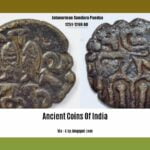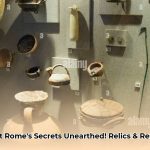Have you ever imagined holding a piece of history in your hand, a tangible link to an empire that shaped the modern world? Ancient Roman money offers precisely that opportunity. Far more than mere instruments of trade, these coins were powerful tools of propaganda, intricate historical records, and direct reflections of Rome’s economic vitality—or vulnerability. This comprehensive guide will take you on a deep dive into the fascinating evolution of Roman currency, from its rudimentary beginnings to its sophisticated imperial forms, exploring its pivotal role in financing vast legions, constructing monumental infrastructure, and projecting the authority of emperors across an unparalleled dominion. Explore Roman artifacts for a closer look. By the end, you’ll not only understand the profound historical significance of Roman coinage but also gain the essential insights needed to identify, authenticate, and meticulously preserve these remarkable artifacts, effectively becoming a guardian of antiquity.
The Epic Evolution of Roman Currency: From Humble Barter to Imperial Might
The narrative of ancient Roman money is inextricably woven into the fabric of Rome’s rise, its enduring expansion, and its eventual transformations. It chronicles how a burgeoning city-state financed its relentless conquests, sustained its vast administrative apparatus, and subtly broadcast its ideologies to a diverse populace spanning continents. Roman currency, often perceived simply as clinking metal, was in reality a sophisticated instrument that mirrored the empire’s fluctuating prosperity, the ambitions of its leaders, and the daily economic realities of its myriad citizens. Let us embark on a detailed exploration of its fascinating unfolding, illuminating the profound historical context of Roman coins.
Echoes of Early Exchange: From Cattle to Cast Bronze
Envision a world before standardized coinage, where economic transactions fundamentally relied on direct reciprocation—perhaps a meticulously bred cow exchanged for a precise measure of grain. This fundamental practice of bartering formed the true bedrock of the early Roman economy. Intriguingly, the very etymology of the Latin term for money, “pecunia,” directly derives from “pecus,” meaning “cattle” or “sheep,” eloquently underscoring the paramount importance of livestock in these formative economic years. This initial reliance on intrinsically valuable, tangible assets vividly signifies the pragmatic and agrarian origins of Roman economic thought.
As Rome steadily expanded its influence and its nascent economy grew more complex, bartering inevitably proved increasingly unwieldy and cumbersome for large-scale commercial transactions. Consequently, the earliest recognized forms of Roman currency emerged as rudimentary, unrefined chunks of bronze, aptly termed Aes Rude (meaning “rough bronze”). These irregular, unweighed pieces served as a primitive medium of exchange, representing a crucial embryonic stage in Rome’s monetary development. Over time, these evolved into the Aes Signatum around the 3rd century BCE—distinctive, rectangular bronze bars, often weighing between 1.5 to 1.6 kilograms (approximately 3.3 to 3.5 pounds), meticulously stamped with official governmental markings, such as an ox or an eagle. While representing a significant stride towards standardization and official endorsement, their sheer heft and singular, large value presented considerable practical limitations for the burgeoning complexities of daily commerce.
The advent of the Aes Grave (meaning “heavy bronze”) around 269 BCE marked a truly transformative advancement. These were the very first standardized, circular cast bronze coins of varying denominations, precisely manufactured in molds. The base unit, the As, typically weighed one Roman pound (approximately 324 grams or 11.5 ounces) and was subdivided into fractions like the semis (half), triens (third), and uncia (twelfth). Each denomination was conspicuously marked with its value and frequently adorned with images of animals (like cows or boars) and revered gods or goddesses (such as Janus or Mercury). This pivotal innovation considerably streamlined and accelerated trade, unequivocally signaling a definitive shift towards a more sophisticated and practical monetary system. Could one truly envision conducting seamless daily purchases with unwieldy, unmarked bronze chunks? The Aes Grave undeniably represented a profound and pragmatic improvement, despite its considerable inherent weight.
The Silver Revolution: Ascendancy of the Denarius and Aureus
The 3rd century BCE bore witness to a pivotal and irreversible shift as Rome, significantly influenced by the advanced monetary practices of the Greek cities in southern Italy, commenced the systematic minting of its own silver currency. Early examples included the didrachm, often inscribed with “ROMANO,” and later the victoriatus. However, the true game-changer, the coin that would fundamentally redefine Roman finance for centuries to come, majestically emerged in 211 BCE: the denarius.
Initially valued at 10 asses (the older bronze units, hence its name, meaning “containing ten”), the denarius’s worth was strategically adjusted to 16 asses in 141 BCE to reflect changing economic realities and the increasing value of silver relative to bronze. This precise adjustment eloquently reveals Rome’s pragmatic responsiveness to significant economic shifts, often directly influenced by burgeoning military expenditures, the fluctuating availability of precious metal resources, or the impact of inflation. Concurrently, highly valuable gold coins, known as aurei, also made their strategic appearance when critical military campaigns or pressing strategic situations necessitated their exceptional use. Their value was eventually meticulously fixed at 25 denarii and their weight typically standardized at 7.87 grams. It stands as a remarkable testament to Rome’s unparalleled adaptability and economic acumen that the relative worth and composition of these essential Roman coins could be so precisely calibrated and fluctuate in direct response to the constantly evolving needs and demands of the burgeoning empire.
Coins as Imperial Messengers: The Art of Propaganda on Metal
Under the shrewd direction of Emperor Augustus, the Roman monetary system underwent a profound and unprecedented transformation. Coins ceased to be mere instruments of commerce and instead evolved into incredibly potent propaganda tools, meticulously designed to disseminate the emperor’s revered image and crucial socio-political messages across the vastest distances imaginable. Consider the sheer strategic brilliance of this innovation: while colossal imperial statues commanded imposing presence in fixed urban locations, coins, by their very nature, traversed every remote corner of the sprawling empire, literally placing the emperor’s authoritative visage and celebrated achievements directly into the hands of ordinary citizens.
Early As coins from the Roman Republic typically featured less personalized, more generic designs, often depicting gods or national symbols. However, with the rise of the emperors, detailed and often idealized portraits on Roman imperial coinage became the primary, ubiquitous method to solidify their newly established rule, project an image of unwavering strength and divine favor, and assure pervasive stability. This remarkably clever integration of ubiquitous visual communication into daily financial transactions profoundly underscores the empire’s sophisticated understanding of mass messaging and public perception management across its expansive and diverse territories. Did this pervasive and repetitive imagery effectively reinforce imperial authority and cult? Historical evidence overwhelmingly suggests it played an absolutely vital role in shaping public perception, maintaining social cohesion, and legitimizing the extraordinary power wielded by emperors within the world’s largest classical empire. Notable usurpers, even those ruling for fleeting periods, ensured their image appeared on coinage, demonstrating its critical role in validating claims to power.
The reverse side of Imperial coins, though typically featuring an emperor’s portrait on the obverse, offered a far greater variety of depictions. These could celebrate monumental architectural achievements like the Colosseum or Trajan’s Column, depict state-sponsored projects such as aqueducts or the revamped harbor of Ostia, or even symbolize imperial conquests—such as Augustus’s use of a crocodile chained to a palm tree to represent the subjugation of Egypt. Military pay was also explicitly referenced, with coins like Mark Antony’s bearing the numbers of specific legions, directly linking the currency to the soldiers it paid and equipped. This multi-layered iconography transformed each coin into a miniature, mobile billboard, disseminating the grandeur and achievements of Rome far and wide.
The Precarious Decline of Roman Coinage: A Cautionary Tale from History
The evolving state and eventual degradation of ancient Roman money offer profoundly insightful, albeit often alarming, glimpses into the empire’s underlying economic health and its perplexing journey towards eventual decline. Analyzing the systematic changes in its currency provides an absolutely critical lens for a nuanced historical analysis.
When Money Loses Its Luster: The Insidious Peril of Debasement
Over the course of several centuries, a deeply concerning and increasingly prevalent trend emerged: the intrinsic silver content of the ubiquitous denarius began to steadily, often imperceptibly, diminish. This deliberate and systematic reduction of precious metal content, technically termed debasement, often served as a stark, undeniable signal of profound underlying financial distress and economic instability within the Roman Empire. Chronic and seemingly unending warfare, coupled with increasingly extravagant imperial spending and a persistent scarcity of newly mined precious metals, placed immense and unsustainable strain on Rome’s central treasury. This desperate predicament inevitably compelled emperors to resort to the insidious method of debasement, an ill-fated attempt to stretch dwindling resources and finance ever-growing expenditures.
Emperor Nero, for instance, notoriously initiated significant reductions in the silver purity of coins in 64 CE, a fateful move that inadvertently established a dangerous and easily imitable precedent for subsequent emperors. By the tumultuous 3rd century CE, an era famously dubbed the Crisis of the Third Century, the denarius was largely superseded by the antoninianus, a coin deceptively designed to appear more valuable (nominally a double-denarius) but which, in reality, contained significantly less silver (often only 1.5 times the denarius’s content, or even less). This downward spiral intensified relentlessly, with silver coins plummeting from near-pure compositions to a mere 50% precious metal content, and eventually reaching an all-time historical low of just 2% by the mid-3rd century. This profound and rapid debasement paints an incredibly vivid and stark portrait of Rome’s increasingly precarious economic situation, does it not? The value of a denarius, once estimated to equal the purchasing power of 10 modern British pounds sterling, could barely command 18 pounds sterling by the end of the empire, despite rampant inflation, demonstrating a significant fall in real value.
Dissecting the Debasement Dilemma: A Deeper Economic Dive
The once robust Roman economic engine, meticulously fueled by reliable and intrinsically valuable coinage, began to sputter uncontrollably as successive emperors consistently and systematically tampered with its fundamental metallic composition. For centuries, Rome’s meticulously crafted coins symbolized its unparalleled strength, forged from high-grade precious metals. But what precisely happens when those vital metals become increasingly scarce and, more critically, inherently diluted? The compelling narrative of Roman debasement provides a sobering and invaluable cautionary tale regarding the perils of fiscal irresponsibility.
Nero’s Precedent and the Severan Slide
Nero’s ill-fated decision in 64 CE to reduce the silver content of the denarius by approximately 11% (and gold by 4.5%), possibly to finance the rebuilding of Rome after the great fire, established a damaging precedent, signaling the initial steps down a path that would severely undermine the long-term stability of the Roman monetary system. Subsequent emperors, including Commodus and Septimius Severus, facing immense military expenditures and escalating resource allocation challenges, further diluted the denarius’s precious metal content. Emperor Caracalla notably introduced the antoninianus in early 215 CE, a coin theoretically valued at two denarii but notoriously containing only about 1.6 times the silver of a single denarius. This deceptive practice, driven by the obvious profit margin of minting a higher-denominated coin with less intrinsic value, aimed to drastically increase the circulating currency without actually sourcing or mining more precious metals.
The Third-Century Tumble: Economic Anarchy and Hyperinflation
The third century CE brought an era of unparalleled political turbulence, incessant civil wars, and relentless barbarian invasions, culminating in the infamous Crisis of the Third Century (235-284 CE). During this tumultuous half-century, the frequent and often violent succession of “soldier-emperors” led to the rapid and desperate issuance of vast quantities of coins with drastically diminished silver content, triggering rampant and crippling hyperinflation. As public trust in the imperial mint rapidly eroded, shrewd citizens began hoarding older, purer coins (often called “good money”) or reverted to direct bartering, causing significant economic fragmentation and widespread market instability. The relentless demands from a constantly campaigning military for higher pay, often needing to be met with freshly minted, debased currency, only exacerbated this destructive cycle, leading to further exponential debasement. By the crisis’s peak, the antoninianus contained as little as 2% silver, often merely given a superficial silver wash to deceive the public, reducing it to little more than a bronze token.
Desperate Measures: Aurelian and Diocletian’s Reforms
Emperor Aurelian, ruling from 270 to 275 CE, courageously attempted to restore some semblance of economic confidence by introducing a reformed antoninianus with a slightly increased silver content (often marked XXI or KA, indicating 20 parts copper to 1 part silver). He also vigorously cracked down on widespread counterfeiting, recognizing the dire need to stabilize the beleaguered Roman economy. Diocletian (284-305 CE) went even further, embarking on perhaps the most ambitious monetary overhaul in Roman history. He reintroduced high-quality, stable gold coins (the aureus, struck at 60 to the pound) and a new, pure silver coin (the argenteus, struck at the old Neronian standard), while also issuing a new large bronze coin that contained a small percentage of silver (the follis). He famously issued the “Edict on Maximum Prices” in 301 CE, a sweeping legislative attempt to curb rampant inflation by mandating stringent price ceilings on a vast array of goods and services. This aggressive governmental intervention, though pioneering and well-intentioned, ultimately proved largely unsuccessful due to its impracticality and inability to enforce, leading to goods disappearing from markets instead.
Constantine’s Golden Legacy: The Enduring Solidus
Constantine I, around 312 CE, introduced the solidus, a groundbreaking high-purity gold coin (struck at 72 to the pound, weighing 4.5g). Unlike its predecessors, the solidus became a cornerstone of monetary stability, particularly for the burgeoning Eastern Roman (Byzantine) Empire, enduring for centuries. However, despite this remarkable innovation, significant economic divisions persisted. The elite primarily transacted in the stable gold solidus, while ordinary citizens continued to grapple with increasingly debased bronze and silver coinage, whose value fluctuated wildly on the market. This emerging two-tiered monetary system vividly reflected the fractured and unequal economic state of the Late Roman Empire.
The True Cost of Coinage Cuts: Enduring Lessons
The long-term repercussions of consistent debasement were severe and far-reaching: unchecked hyperinflation, profound and pervasive distrust in the imperial mint, rampant economic fragmentation, a weakened military perpetually demanding higher pay, and pervasive political volatility leading to the frequent collapse of central authority. Numerous hoards of coins discovered across former Roman lands consistently reveal a preference among citizens for older, purer currency, indicating widespread public awareness and distrust of newer, debased issues. Historians widely agree that systemic Roman currency debasement played a significant and undeniable role in the empire’s eventual challenges and decline.
The story of Roman debasement holds crucial and enduring lessons for contemporary economies. The empire’s increasing reliance on monetary expansion and the reduction of intrinsic value to cover deficits inevitably led to runaway inflation and catastrophically eroded public trust in the currency. The eventual and remarkable success of the solidus in the East highlights the critical importance of stable governance and sound, disciplined financial management for maintaining a reliable, long-lasting monetary system. Ultimately, the seemingly simple decisions made regarding the composition of coinage had far-reaching, cascading effects on the Roman Empire’s destiny.
Tracking Monetary Shifts: From Augustus to Diocletian
The period spanning Augustus to Diocletian represents a critical epoch in the history of Roman coinage, showcasing dramatic shifts from profound stability to severe economic crisis and desperate, often groundbreaking, attempts at reform. How did these pivotal emperors strategically leverage and transform the Roman monetary system? And what profound, enduring insights does this period offer into the complex forces behind the rise, resilience, and eventual transformation of Rome itself? Let us meticulously explore these crucial economic turning points.
Augustus: Architect of Stability and the Pax Romana
Augustus, the revered first Roman Emperor, possessed a truly keen and visionary understanding of the transformative power inherent in a stable, reliable currency. He meticulously standardized the coinage system, ensuring the denarius maintained an exceptionally high silver purity (approximately 95%) and the aureus a consistent gold content. This deliberate and disciplined monetary policy fostered robust inter-provincial trade, instilled widespread and enduring confidence throughout the vast empire, and effectively laid the crucial financial groundwork for the Pax Romana—an unprecedented era of profound peace, stability, and widespread prosperity that lasted for over two centuries. One might thoughtfully consider Augustus’s astute monetary policy as the indispensable bedrock upon which the Roman Empire’s golden age was meticulously constructed and sustained.
Beyond mere economic stability, Augustus shrewdly recognized the potent and pervasive propaganda value of coins. He effectively utilized them to widely disseminate his youthful portrait and crucial symbols of his authority, meticulously projecting an image of unwavering strength, divine favor, and profound stability to every remote corner of the empire. This strategic and pervasive use of coinage was akin to having a ubiquitous, mobile billboard in every citizen’s pocket, consistently cementing his legitimacy and imperial power. The practice of moneyers (officials responsible for minting) adding their names to coins continued into Augustus’s reign, though the emperor held ultimate control over the imagery, ensuring his message was paramount.
Diocletian: Reforming in the Crucible of Crisis
Fast forward a tumultuous few centuries, and the Roman Empire found itself grappling with an existential crisis: rampant hyperinflation, pervasive economic instability, and constant internal and external pressures threatened to tear its very fabric apart. Diocletian, a determined and pragmatic soldier-emperor, courageously stepped in, embarking on a monumental and comprehensive effort to rectify the profound economic disarray and re-establish central control.
He boldly introduced a new, high-quality silver coin, the argenteus (based on the Neronian standard of 3.4g pure silver), and undertook significant reforms of the gold aureus (standardized at 60 to the pound), fervently hoping to restore much-needed trust in the beleaguered Roman currency. He also introduced the follis, a large bronze coin with a thin silver wash, intended to serve everyday transactions. Diocletian also famously issued the “Edict on Maximum Prices” in 301 CE, a sweeping legislative attempt to combat rampant inflation by mandating stringent price ceilings on a vast array of goods and services across the entire empire. This aggressive and unprecedented governmental intervention in the economy, though pioneering in its scope and ambition, remains a subject of intense historical debate regarding its ultimate effectiveness, with many scholars concluding it largely failed due to widespread non-compliance and black markets. Did this ambitious decree genuinely achieve its intended goal of economic stabilization, or did it merely highlight the depths of the crisis? Scholars continue to meticulously analyze its complex and often contradictory legacy.
The Enduring Debate Over Diocletian’s Reforms
The long-term efficacy and overall success of Diocletian’s extensive monetary reforms remain a highly contentious and actively debated issue among economic historians and numismatists. While some scholars argue they provided temporary, much-needed relief from the immediate economic turmoil and laid the groundwork for future stability, others point to the persistent inflation, widespread economic woes, and continued debasement of bronze coinage that continued to plague the empire despite his best efforts. The edict, for instance, proved unenforceable and was largely ignored.
Numismatists (coin experts) and economic historians continually and meticulously study newly discovered coin hoards, analyze the precise metal content of surviving specimens, and scrutinize available economic papyri to gain a comprehensive understanding of the true impact and nuanced effects of Diocletian’s policies. By diligently cross-referencing this invaluable numismatic data with archaeological evidence and contemporary historical texts, researchers strive to construct a more nuanced, accurate, and thorough understanding of Roman economic history during this critical and transformative transitionary period. The distinct, generalized portraits on Diocletian’s coins, emphasizing imperial power rather than individual likeness, also signaled a shift in propaganda strategy, emphasizing unity through the Tetrarchy.
| Feature | Augustus (Early Principate) | Diocletian (Late Empire) |
|---|---|---|
| Main Objective | Establish profound monetary stability, foster robust trade, project singular imperial power. | Reform severely debased currency, vigorously combat rampant inflation, re-establish imperial authority through economic order. |
| Key Actions | Standardized denarius and aureus (high purity), promoted stable weights, utilized coinage for pervasive imperial propaganda (personal portraiture). | Introduced new gold (aureus standard), new silver (argenteus), and part-silver bronze (follis) denominations; issued the ambitious Edict on Maximum Prices; centralized mint operations. |
| Economic Context | Era of expansion, relative peace (Pax Romana), increasing wealth. | Era of severe crisis, hyperinflation, civil wars, barbarian incursions. |
| Propaganda Style | Emphasized idealized personal likeness, divine association, prosperity, individual achievement. | Emphasized stern, generalized imperial authority, unity of the Tetrarchy, glory of Rome and its army (“Spirit of Rome”). |
| Long-Term Impact | Facilitated widespread and enduring trade, underpinned the historical Pax Romana, set the standard for Imperial coinage for centuries. | Debated; provided temporary improvements but faced persistent economic challenges; new denominations often failed to stabilize; solidus (of Constantine) more enduring. |
For dedicated collectors, Roman coins offer an unparalleled and deeply tangible glimpse into the intricate economic and political strata of the empire. Coins minted during the reigns of Augustus and Diocletian are particularly valuable as they vividly reflect pivotal, contrasting moments in Rome’s economic trajectory—one of unparalleled stability, the other of desperate reform. By strategically focusing on acquiring well-preserved ancient Roman coins from both these transformative periods, collectors can truly appreciate the profound artistic, economic, and historical significance of Roman coinage. Beyond mere acquisition, investing in thorough scholarly research and diligent authentication is absolutely paramount to accurately differentiate between genuine artifacts and deceptive forgeries, thereby meticulously preserving the integrity and invaluable historical value of private collections. Understanding the practical impacts of economic policies in Rome is crucial for historians and collectors alike, as articulated by various numismatic and historical sources.
What profound secrets do these millennia-old coins still silently hold? Each one meticulously narrates a unique story of power dynamics, sophisticated propaganda, and dynamic economic change. By meticulously tracking the journey from Augustus to Diocletian – Tracking Roman Coin Debasement, we gain an invaluable and genuinely deeper understanding of the complex, cascading forces that meticulously shaped the remarkable rise, enduring resilience, and eventual transformation of one of history’s greatest and most influential empires.
Unlocking the Past: What Ancient Roman Coins Truly Reveal
Studying ancient Roman money offers a unique and invaluable window into the complex financial structures, deeply embedded social values, and dominant political ideologies of the Roman Empire. These small, enduring discs of metal provide a tangible, direct link to a bygone era, allowing us to interpret the silent narratives etched onto their surfaces. Here’s a glimpse into the diverse and profound insights these historic Roman artifacts can eloquently reveal:
| Area of Study | What It Reveals |
|---|---|
| **Numismatics |
- Unveiling ancient roman gladiator helmets design secrets that decided victory or death - August 14, 2025
- Unlocking ancient roman domes: Innovation secrets for modern builds, like the Pantheon - August 14, 2025
- Unlock Ancient Secrets: Ancient Roman Money, Empire’s Rise, a Collector’s Guide - August 14, 2025

![[Ancient Coins of India Price]: Unveiling the Value of Historical Treasures ancient-coins-of-india-price_2](https://www.lolaapp.com/wp-content/uploads/2023/12/ancient-coins-of-india-price_2-150x150.jpg)














